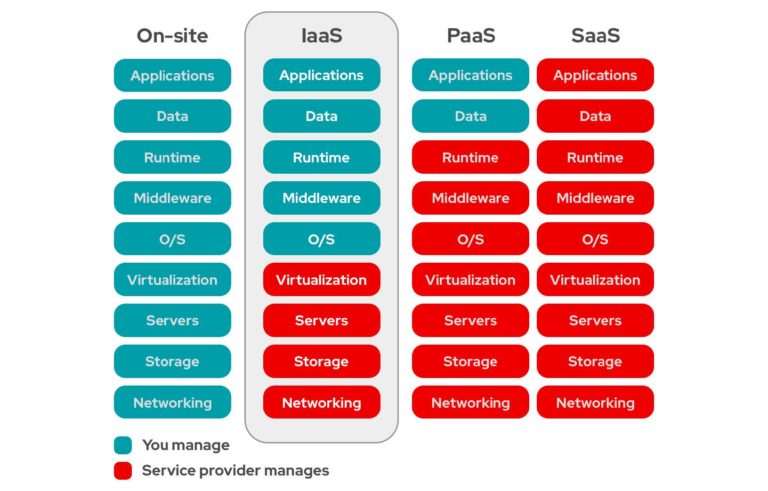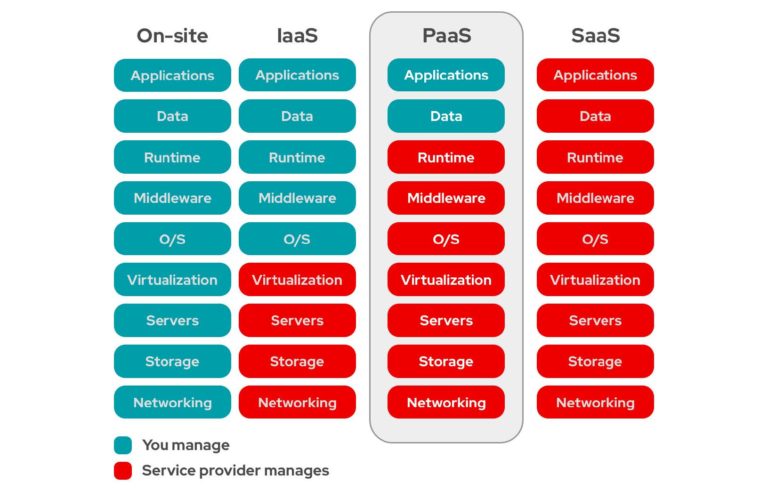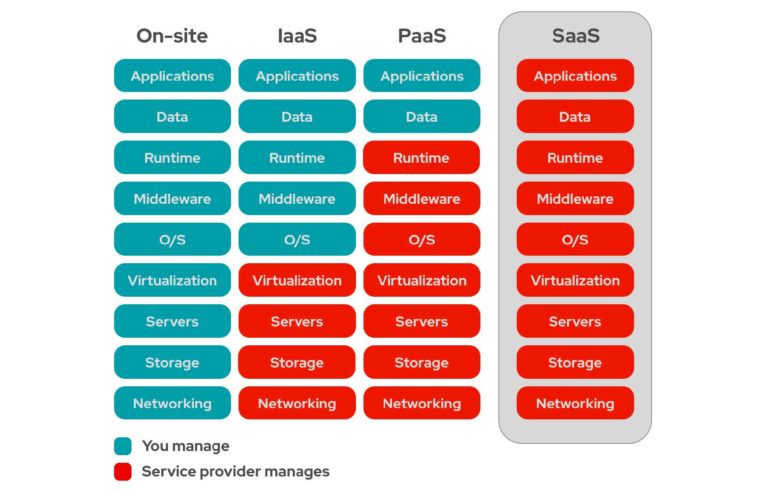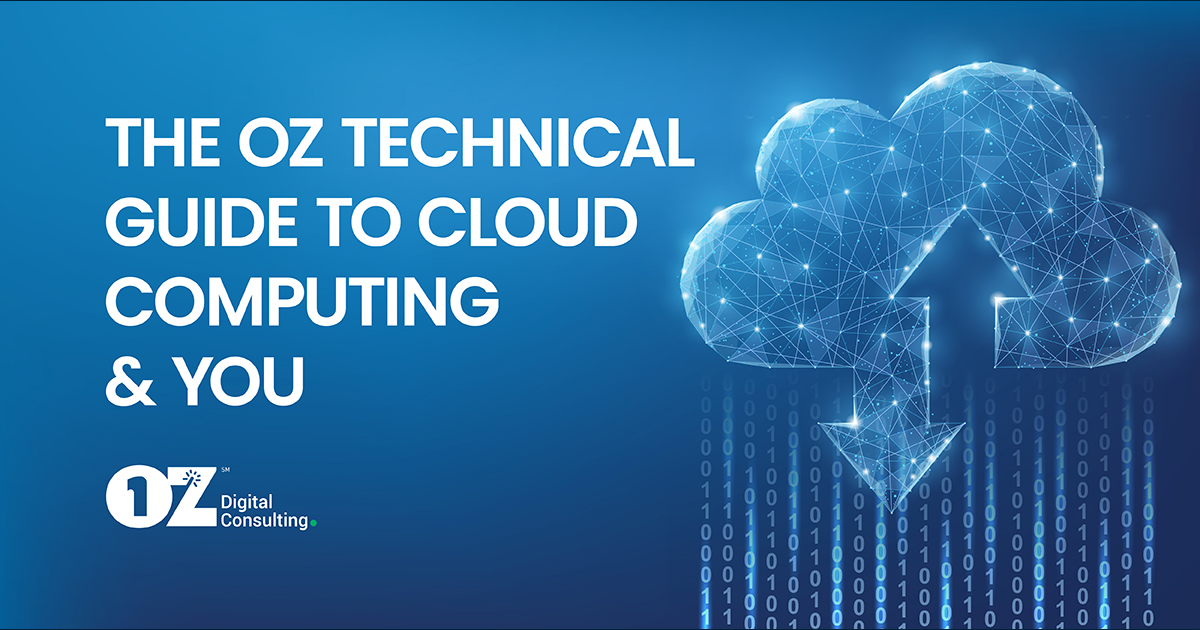[vc_row][vc_column][vc_column_text]
These days it seems as if everything is happening in the cloud.
But what exactly does that mean?
The short answer is that the cloud is somewhere at the other end of your internet connection—a place where you can access apps and services as well as a location in which your data can be stored securely.
The longer, more comprehensive answer is that cloud solutions provide access through the web to computing resources and products, which may include development tools, business applications, data storage, networking solutions, and more. These cloud services are hosted at a software vendor data center and managed by the cloud services provider or onsite at a customer’s data center.
The cloud is a big deal for three reasons:
- Less effort is required to maintain or eliminate capital expenses
- It is effectively infinite in size—i.e., no need to worry about running out of capacity
- Access to cloud-based applications and services is available from anywhere
Yet IT leaders are often hesitant to move critical applications into the hands of cloud service providers. (Most applications and infrastructure remain on premises for a majority of small companies.)
Why?
Partly, it is because they don’t see a clear migration path for entrenched legacy assets.
Beyond that, however, they also aren’t sure whether public cloud services are ready to meet enterprise needs.
The good news? Regardless of where you are on your journey, OZ’s Cloud Services will help you harness the power of the cloud to transform your organization, save money, increase scalability, gain competitive advantage, and improve business efficiency and operations.
A Brief History of Cloud Computing
Though the Internet’s roots reach back into the 1960s, it wasn’t until the early 1990s that it gained relevance for businesses: The World Wide Web was born in 1991 and, in 1993, a web browser called Mosaic was released that allowed users to view web pages that included graphics as well as text.
This heralded the first company websites—and not surprisingly, most of these belonged to companies involved in computing and technology.
As Internet connections gained speed and reliability, a new type of company called an Application Service Provider (ASP) appeared. ASPs took existing business applications and ran them for their customers.
The setup looked something like this:
The ASP would buy the computing hardware and keep the application running. The customer would pay a monthly fee to access it over the Internet. Since then, the cloud has grown and grown: In 2013 worldwide spending on cloud services ran to an estimated $47 billion. And that number is set to more than double to over $108 billion by 2017 as companies invest in cloud services as the foundation for new, competitive offerings.
How Cloud Computing Works
With a cloud app, you just open a browser, log in, and start working. That means a field sales representative using cloud-based CRM can access all the information they need from their mobile device. Contact notes can be updated in real time, so they are always fresh and complete and available to others—no more waiting to get back to the office to type it in. And sales managers know exactly which deals will close and when, from their desktop machines in their offices, tablets, or phones when they are out and about.
All of this happens without any hardware to buy and manage, or software to install and update.
Types of Clouds
- Public clouds: Public clouds are cloud environments typically created from IT Infrastructure not owned by the end user. Some of the largest public cloud providers include Alibaba Cloud, AWS Google Cloud, IBM Cloud, and Microsoft Azure. Traditional public clouds always ran off-premises, but today’s public Cloud Providers have started offering cloud services on clients’ on-premises data centers. This has made location and ownership distinctions obsolete.
- Private clouds: Private clouds are loosely defined as cloud environments solely dedicated to a single end user or group, where the environment usually runs behind that user or group’s firewall. All clouds become private clouds when the underlying IT infrastructure is dedicated to a single customer with completely isolated access.
- Managed private clouds: Customers create and use a private cloud that’s deployed, configured, and managed by a third-party vendor. Managed Private Clouds are a cloud delivery option that helps enterprises with understaffed or under skilled IT teams provide better private cloud services and infrastructure.
- Dedicated clouds: A cloud within another cloud. You can have a dedicated cloud on a public cloud or on a private cloud. For example, an accounting department could have its own dedicated cloud within the organization’s private cloud.
- Hybrid clouds: A Hybrid Cloud is a seemingly single IT environment created from multiple environments connected through local area networks (LANs), wide area networks (WANs), virtual private networks (VPNs), and/or APIs.
The characteristics of hybrid clouds are complex and the requirements can differ, depending on whom you ask. For example, a hybrid cloud may need to include:
- At least one private cloud and at least one public cloud
- Two or more private clouds
- Two or more public clouds
- A bare-metal or virtual environment connected to at least one public cloud or private cloud
Cloud Services
Cloud Services are infrastructure, platforms, or software hosted by third-party providers and made available to users through the internet.
There are three main types of as-a-Service solutions: IaaS, PaaS, and SaaS. Each facilitates the flow of user data from front-end clients through the internet to the cloud service provider’s systems and back—but vary by what is provided.
IaaS

With IaaS, a cloud service provider manages the infrastructure for you—the actual servers, network, virtualization, and Data storage—through an internet connection. The user has access through an API or dashboard, and essentially rents the infrastructure.
PaaS

With PaaS, the hardware and an application-software platform are provided and managed by an outside cloud service provider, but the user handles the apps running on top of the platform and the data the app relies on.
Primarily for developers and programmers, PaaS gives users a shared cloud platform for application development and management—an important DevOps component—without having to build and maintain the infrastructure usually associated with the process.
SaaS

SaaS is a service that delivers a software application—which the cloud service provider manages—to its users.
Typically, SaaS apps are web applications or Mobile Apps that users can access via a web browser. Software updates, bug fixes, and other general software maintenance are taken care of for the user, and they connect to the cloud applications via a dashboard or API.
SaaS also eliminates the need to have an app installed locally on each individual user’s computer, allowing greater methods of group or team access to the software.
Final Thoughts
Generally, when contemplating cloud adoption, many enterprises have been mainly focused on new cloud-native applications—that is, designing and building applications specifically intended to use cloud services. They haven’t been willing to move their most mission-critical apps into the public cloud.
However, these enterprises are now beginning to realize that the cloud is ready for the enterprise if they select the right cloud platforms. Which is to say, those that have a history of serving the needs of the enterprise.
Ready to begin your own cloud journey? Click here now.
Regardless of where you are on your journey, OZ will help you bring to bear thepower of the cloud to transform your organization, save money, increase scalability, gain competitive advantage, and improve business efficiency and operations. Find out more about our cloud services and assessment offerings here.
Contact an Expert:
EMMANUEL RAMOS
OZ Chief Solutions Officer
+1-800-443-5210[/vc_column_text][/vc_column][/vc_row]
